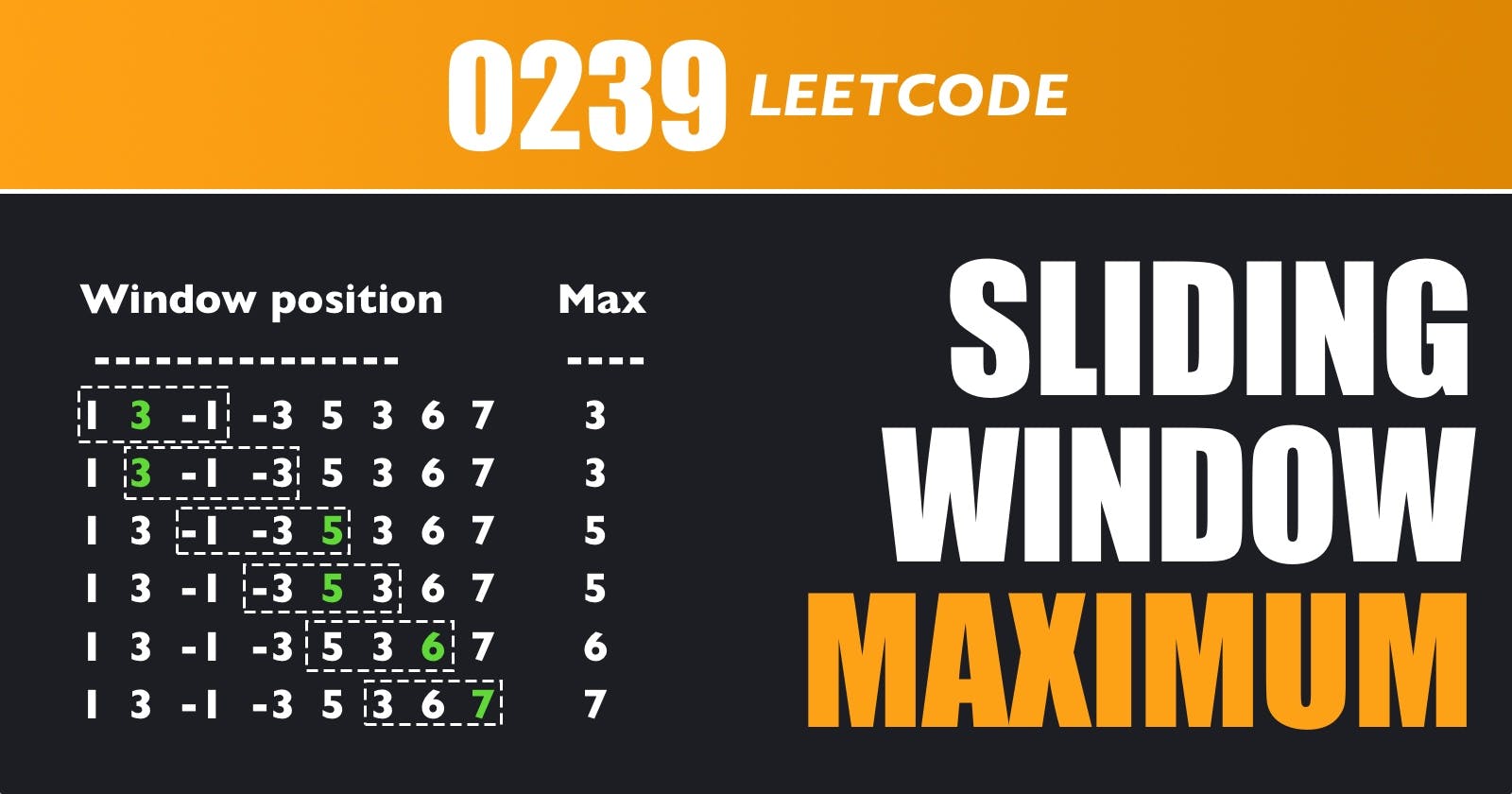Table of contents
Problem - Leetcode
You are given an array of integers nums, there is a sliding window of size k which is moving from the very left of the array to the very right. You can only see the k numbers in the window. Each time the sliding window moves right by one position.
Return the max sliding window.
Example 1:
Input: nums = [1,3,-1,-3,5,3,6,7], k = 3
Output: [3,3,5,5,6,7]
Explanation:
Window position Max
--------------- -----
[1 3 -1] -3 5 3 6 7 3
1 [3 -1 -3] 5 3 6 7 3
1 3 [-1 -3 5] 3 6 7 5
1 3 -1 [-3 5 3] 6 7 5
1 3 -1 -3 [5 3 6] 7 6
1 3 -1 -3 5 [3 6 7] 7
Example 2:
Input: nums = [1], k = 1
Output: [1]
Constraints:
1 <= nums.length <= 10<sup>5</sup>-10<sup>4</sup> <= nums[i] <= 10<sup>4</sup>1 <= k <= nums.length
Solution in Golang
func maxSlidingWindow(nums []int, k int) []int {
output := []int{}
q := make([]int, 0)
l, r := 0, 0
for r < len(nums) {
for len(q) != 0 && nums[q[len(q)-1]] < nums[r] {
q = q[:len(q)-1]
}
q = append(q, r)
if l > q[0] {
q = q[1:]
}
if (r + 1) >= k {
output = append(output, nums[q[0]])
l++
}
r++
}
return output
}
This code defines a function maxSlidingWindow that takes two parameters: a slice of integers nums and an integer k. The goal of this function is to find the maximum element in a sliding window of size k as it moves from left to right through the nums slice and return the maximum values in a new slice.
Here's a step-by-step explanation of how the code works:
Initialize
outputas an empty slice of integers to store the maximum values found in the sliding window.Create an empty slice
qto act as a deque (double-ended queue) for storing indices of elements in thenumsslice.Initialize two pointers
landrto 0.lrepresents the left end of the sliding window, andrrepresents the right end of the sliding window.Start a
forloop that continues until the right pointerrreaches the end of thenumsslice.Inside the loop, there is another
forloop that runs while the dequeqis not empty and the element at the last index inq(i.e.,nums[q[len(q)-1]]) is less than the current elementnums[r]. This inner loop removes elements from the back of the dequequntil the condition is met, effectively maintaining a deque of decreasing elements.After the inner loop, the current index
ris appended to the dequeq. This is done because it is possible that the maximum element for the current window might be the element at indexr.Check if the left pointer
lis greater than the index stored at the front of the dequeq. If it is, this means that the front element inqis outside the current window, so we remove it from the front of the deque.Check if the size of the current sliding window (i.e.,
r+1) is greater than or equal tok. If it is, this means that the window has reached the desired size ofk, and we can add the maximum element in the window (which isnums[q[0]], whereq[0]stores the index of the maximum element) to theoutputslice. Then, increment the left pointerl.Increment the right pointer
rto move the sliding window one step to the right.Repeat steps 4 to 9 until the right pointer
rreaches the end of thenumsslice.Finally, return the
outputslice, which contains the maximum values for each sliding window of sizek.
In summary, this code efficiently finds the maximum values in a sliding window of size k as it moves through the input slice nums using a deque data structure to optimize the process.
